Guide for Kittens & Cats
Because of our pet advocacy work and our Jill’s Next Door Feline Alliance Program, we receive a ton of messages and phone calls regarding kittens, cat care, rehoming, adoption etc. We have collected info from The Kitten Lady, Alley Cat Allies, WebMD, Daily Paws, Facebook, Best Friends Animal Society, and our own experience to make this page a one stop shop to answer all of your cat related questions. We cover what to do when you find mom and kittens, just kittens, kitten care, adoption, Trap Neuter Release (TNR), cats over 8 months, etc. We will also provide resources for cats that are lost and found, community cats, rehoming and adoption.
i want to adopt a cat or kitten, where do i go?
You can find all cats and kittens (breed, color, age, child friendly, dog friendly, cat friendly, health status and more) through petfinder.com. Most of our local rescues post cats for adoption on this site. You can also try All About the Cats Animal Rescue, Truly All Cats, Animal Rescue Force, Dezzy’s Second Chance Animal Rescue, Kitty Karma of Delray, Tricounty Animal Rescue, Peggy Adams, Justin Bartlett Animal Rescue, KitKat Animal Rescue, Love for Cats, Lady Luck Animal Rescue, Good Karma Pet Rescue, Abandoned Pet Rescue, UFAR Animal Rescue, Saving Sage Animal Rescue, Animal Aid Inc, Adopt A Cat Foundation, Cat Exclusive, Feline Friends, Paws2Care Coalition. Cathy’s Cats to name a few. You can also check the multiple Facebook Groups dedicated to finding homes for kittens or cats (found below). You will complete an application and pay a small adoption fee. The fee usually covers defleaing, deworming, vaccinations, spay/neuter, etc.
i want to rehome a cat or kitten, where do i go?
You can post your cat’s info on petfinder.com. You can also try All About the Cats Animal Rescue, Truly All Cats, Animal Rescue Force, Dezzy’s Second Chance Animal Rescue, Kitty Karma of Delray, Tricounty Animal Rescue, Peggy Adams, Justin Bartlett Animal Rescue, KitKat Animal Rescue, Love for Cats, Lady Luck Animal Rescue, Good Karma Pet Rescue, Abandoned Pet Rescue, UFAR Animal Rescue, Saving Sage Animal Rescue, Animal Aid Inc, Adopt A Cat Foundation, Cat Exclusive, Feline Friends, Paws2Care Coalition, Cathy’s Cats to name a few. Please note that it is very difficult to rehome a cat, so please exhaust every measure before trying to rehome your pet. If rescues cannot take them on, they will be most likely put down. If the above rescues cannot help you, you can try The Cat Depot in Sarasota, they have an amazing facility and are more likely to take on your cat. It is worth the drive to save your pet. You can also check the multiple Facebook Groups dedicated to finding homes for kittens or cats (found below).
i want to trap my neighborhood cats. what do i do?
Neighborhood cats are most likely Community Cat Colonies if they have tipped ears.. If they are spayed and/or neutered, and approved by the county, it is illegal to move them. If you have community cats that need to be trap neutered, and released (TNR) you can contact the county here. You can also try local rescues to see if they will help you. All of these rescues may not trap, so review their website for more information. Truly All Cats, Animal Rescue Force, Dezzy’s Second Chance Animal Rescue, Kitty Karma of Delray, Tricounty Animal Rescue, Peggy Adams, Love for Cats Lady Luck Animal Rescue, Good Karma Pet Rescue, Abandoned Pet Rescue, UFAR Animal Rescue, Saving Sage Animal Rescue, Animal Aid Inc, Adopt A Cat Foundation, Cat Exclusive, Feline Friends, Paws2Care Coalition, Cathy’s Cats to name a few. You can also visit Save A Pet for trapping and other rescues here. You can contact Give Hope TNVR here or Purzilla Cat Rescue here. You can learn how to TNR here. Please also review Palm Beach County’s ordinances regarding Community Cats.
help! i lost my cat! what do i do?
First, look around your home to make sure your cat definitely got out. Check crevices’ and hiding places. If your cat definitely got out, put their litter box and a item of clothing with your scent on it so that the cat can smell familiar scents and his nose may lead him back. Check around the home and neighborhood, perhaps shaking treats and saying “treats.” Ask neighbors if they have seen him. Have a picture readily available. Download an app like Canva, and making “missing flyers” and post in your neighborhood, on the Nextdoor app, all over Facebook (including the cat groups below) and ask your HOA if they can add your lost pet to their newsletter. You can also post your cat’s info on Pawboost. Cats do not normally go more than 2-3 miles from home, so keep looking. Contact shelters and Animal Care and Control to see if anyone found him and turned him in. Put a trap in your yard with high value food to see if you can trap him. You can also contact Jamie Katz, our local Pet Detective.
local facebook groups to join looking to adopt, find a lost cat, found a lost cat, trap, neuter release, and community cats
If your looking to adopt locally, find your lost cat, post about finding a lost cat, need to trap, neuter and release your neighborhood community cats, or discuss community cat laws or ideas, join applicable group and search!
ADOPTION
LOST & FOUND
TNVR /COMMUNITY CATS
Facebook groups to join/specific cat
If your looking to adopt a specific cat locally, (i.e. senior cat, declawed, good with kids, black or white cat, etc) join applicable group and search!
FACEBOOK GROUPS A-D
FACEBOOK GROUPS E-W
Mom & kittens: I FOUND A MOM & KITTENS OUTDOORS. WHAT DO I DO?
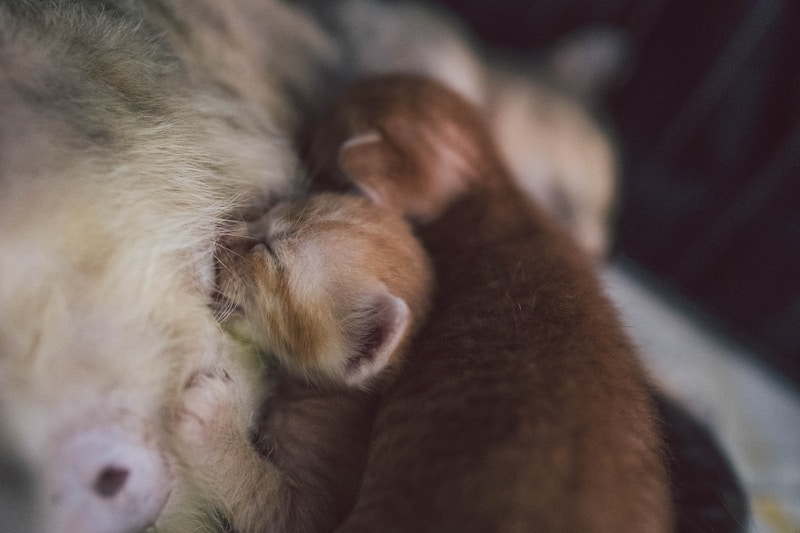
STEP 1: LEAVE THEM BE
Mom is the best caregiver for these kittens, so leaving then alone gives them the best rate of survival. If you see kittens alone, more than likely their mother is nearby. DO NOT remove kittens younger than 8 weeks old from mom. Leave them outdoors with mom. Read more about leave them be.

STEP 2: DON'T BRING THEM INDOORS
Mom may become so stressed by being confined in the new environment that it impacts her health and her ability to care for her babies. Community cats thrive in their outdoor home and mom has likely chosen an ideal space to raise them, so there is no need to intervene.
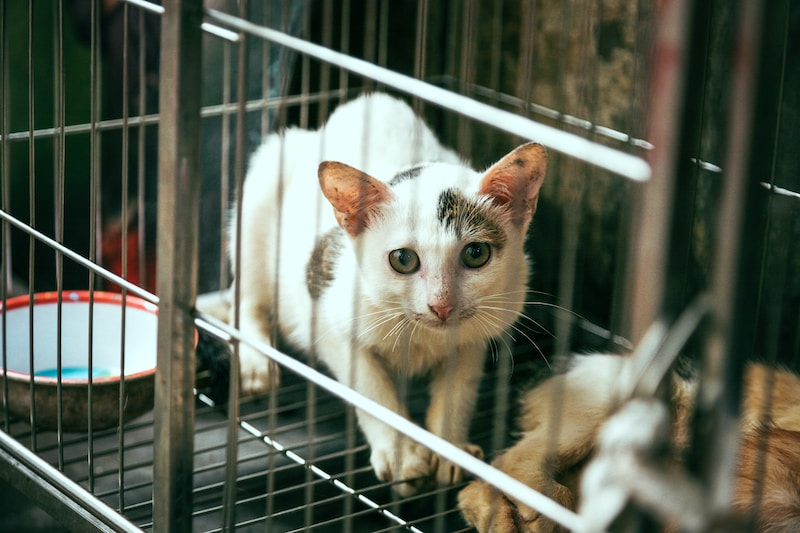
STEP 3: NO ANIMAL CARE & CONTROL OR KILL SHELTER
Some shelters do not have programs to provide the care for unweaned kittens. There is a risk that the kittens/mom will be killed. Call local shelters to see what their protocol is. Determine if they have foster volunteers to take in the mom AND kittens–never either/or. Contact our local rescues here.
How CAN I Help Mother Cat and Kittens While They are Outdoors?
You can’t do a mother cat’s job, but you can make her more comfortable while she for her kittens outdoors. Provide her with essentials. Mom will take care of kittens. Source: Alley Cat Allies

FOOD & WATER for mom
Regular food and water. A nursing mother cat can always use some extra wet food and water so she can keep providing necessary nutrients to her kittens. Find details to care for community cats and moms here.
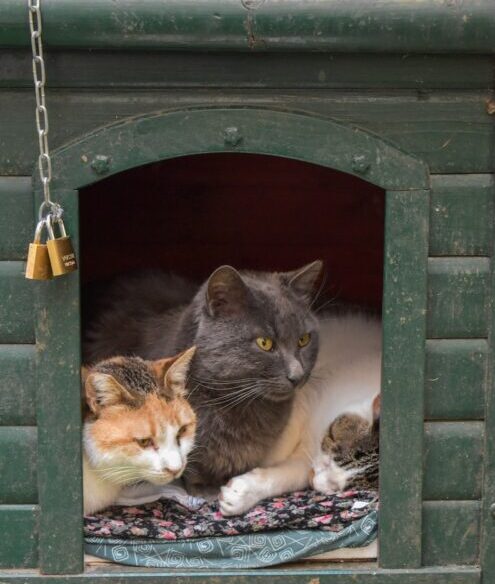
make a shelter
An outdoor shelter. Mother cats like to raise their kittens in nests, where they feel hidden and protected. An outdoor shelter is a perfect safe space. You can purchase one or build one yourself. Learn more
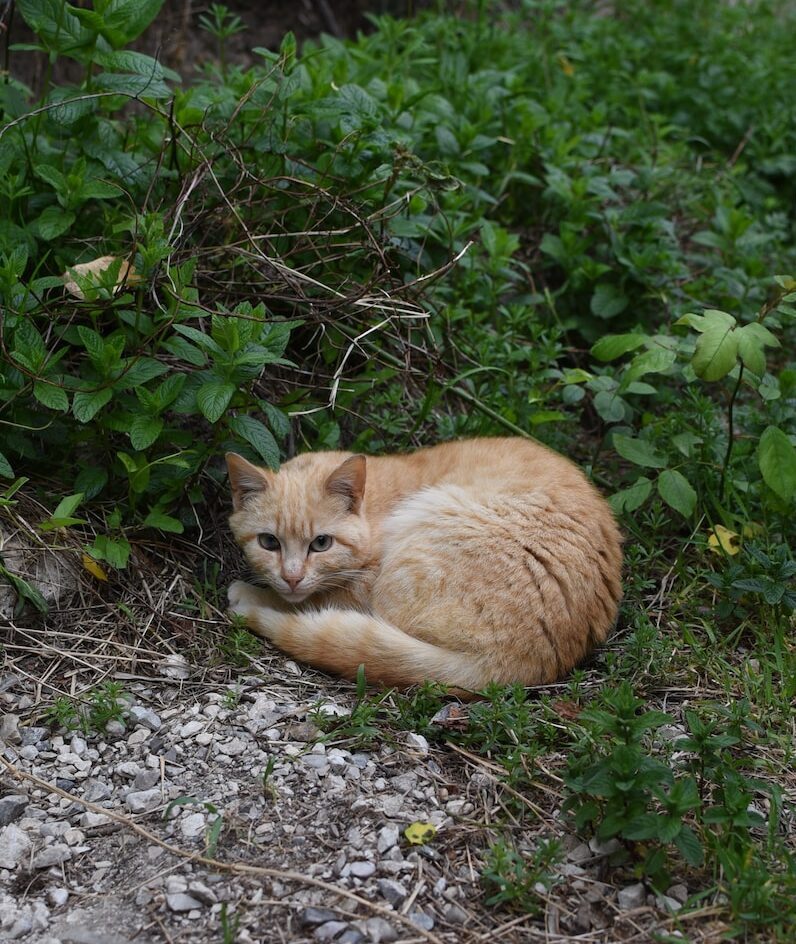
keep them safe
Peace and quiet. Keep an eye on mother and kittens, but don’t approach or let dogs, kids or other cats come near. Doing so will cause her stress. Source: Alley Cat Allies
kittens no mom: I found kittens without a mom, now what?
You found kittens outdoors and don’t see a mom. The next steps are critical to determine the best plan of action. All of the following steps are the best call to action if the kitten is less than 8 weeks. Source: Alley Cat Allies and Kitten Lady
DETERMINE THE AGE OF YOUR KITTENS
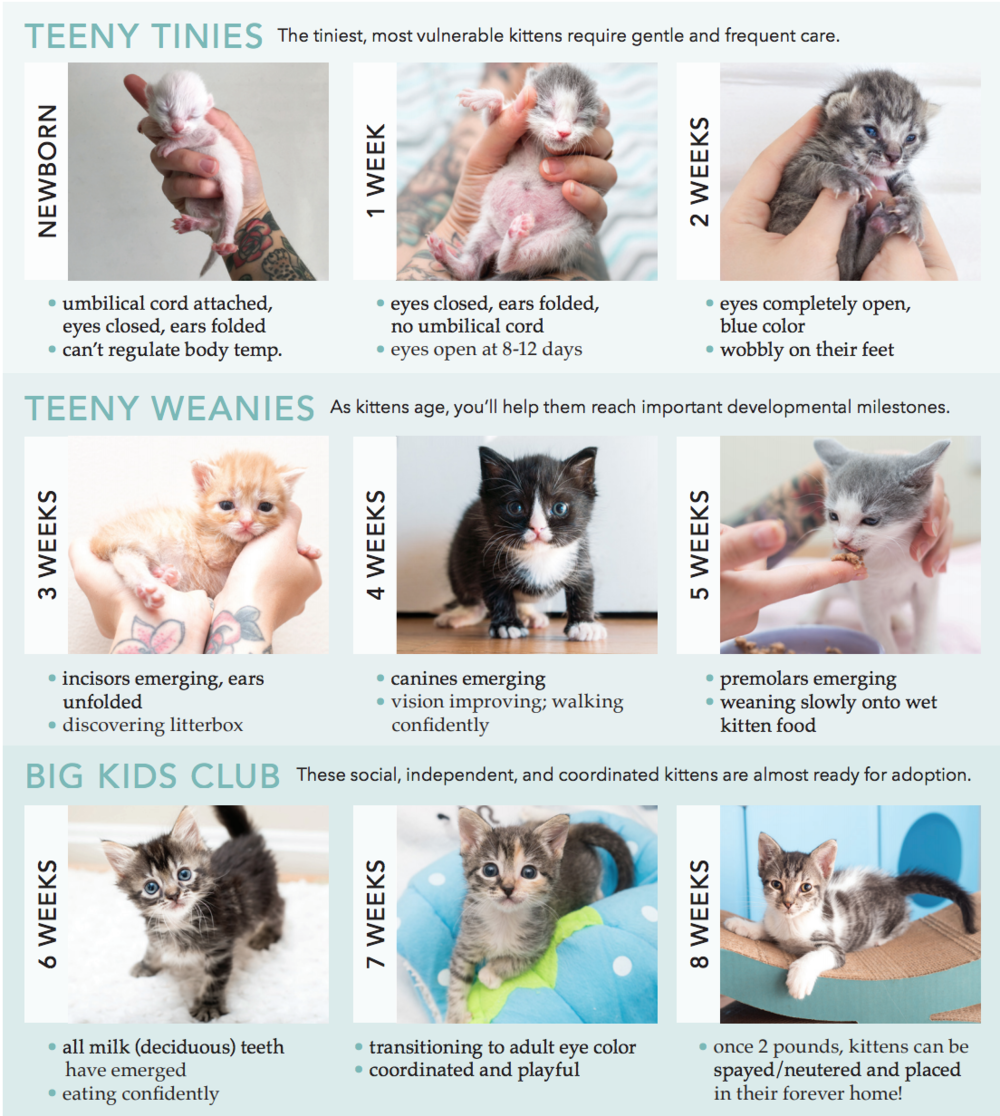
the kittens are 8 weeks old or less
Kittens need their mom. It is best to wait to see if mom comes back for them. This is best case scenario. Source: Alley Cat Allies
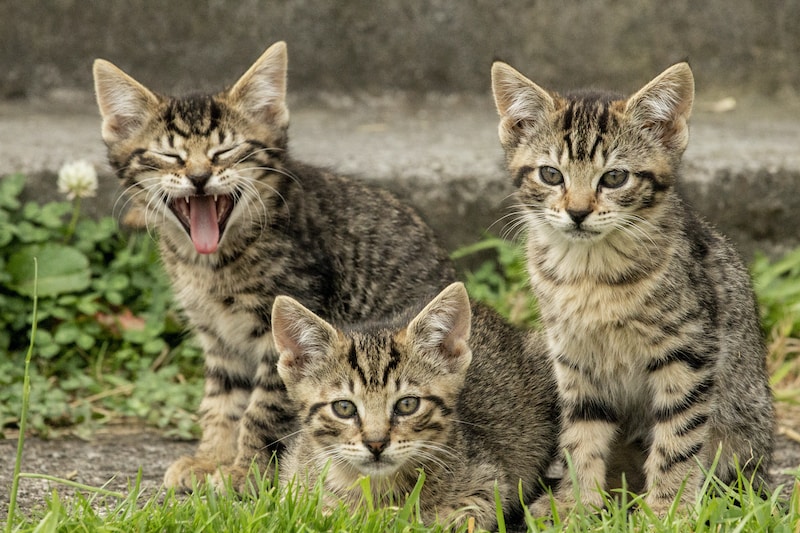
STEP 1: kittens may not be abandoned
Do not assume that a kittens are abandoned or orphaned just because you do not see mom. Mom will temporarily leave her kittens for good reasons, like looking for food. She may even be hiding, waiting for YOU to leave. Pro tip: Sprinkle flour near the kittens’ nest. If the mother cat returns, she will leave paw prints.
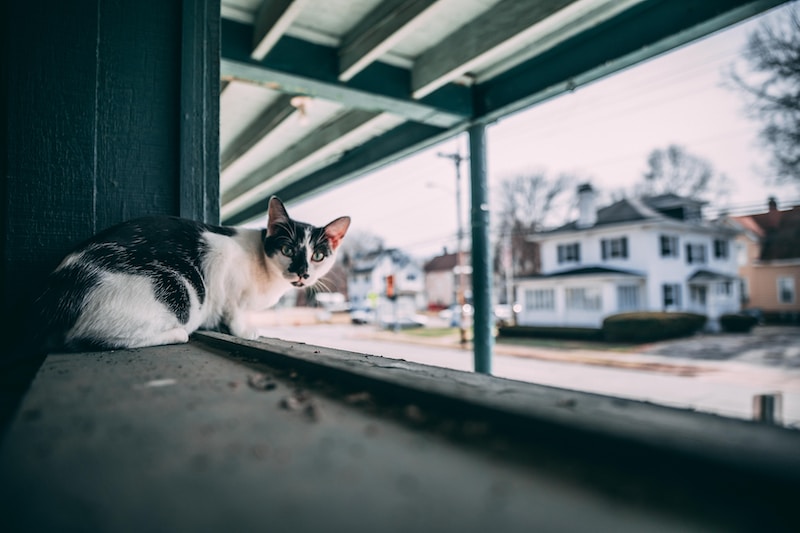
STEP 2: WATCH AND WAIT
Wait several hours, or even a full day, to see if the mom returns. Watch from afar, as your presence may keep her from returning to her kittens. If you don’t see mom for a while, check on the kittens periodically. If they are cuddled together and sleeping quietly, look pink, warm, and clean, and have full bellies, then their mother has very likely been back. Outdoor cats are good at staying out of sight.

step 3: mom didn't come back
If you have waited for several hours or more than a day and mom is no longer around, step in to help them. Neonatal kittens (kittens 4 weeks old and younger) will need special supplies and round-the-clock care to survive. Care for them until you find a foster or link them with a healthy nursing cat so she can feed the new batch. Contact the local rescues for more information.
OK. MOM DEFINITELY ABANDONED THE BABY KITTENS. NOW WHAT?
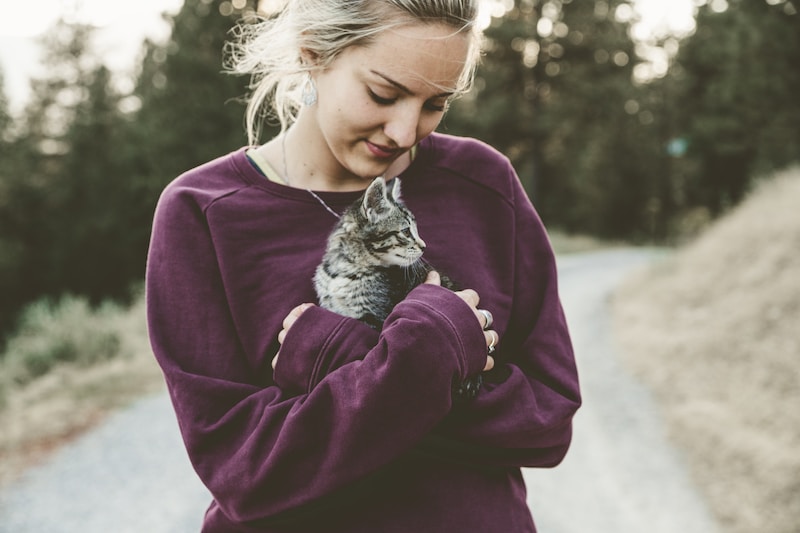
STEP 1: CAN CARE FOR THE BABIES YOURSELF?
If you have the time and the means, please help these neonatal kittens. They are completely dependent on you to survive. This is such an important job, and with the cat overpopulation in Florida, you would be helping a great deal. Even if you are a temporary caregiver until you find a foster. Let’s get started.

STEP 2: Keep them warm
Kittens can chill easily, and this is life-threatening. From the moment you find them, keep them warm and watch out for signs of chilling (listlessness and cool to the touch). Use your own body heat to warm her up and rub her gently to aid circulation. They cannot control their own body temperature until they are at least 3 weeks old. Don’t feed until they are warm.
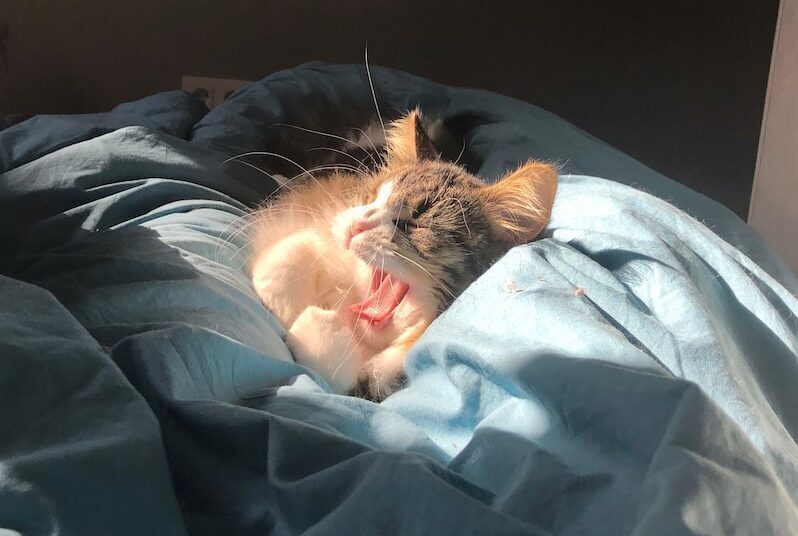
step 3: create a nesting area
Build a soft nest with a heating pad that is completely covered with a blanket or towel. Make sure they are able to move away from the heat. Change bedding daily or if there are accidents. Don’t get the kittens wet. If a kitten needs to be cleaned up, wash only certain parts of her little body with a washcloth. Be sure to always fully dry with a hair dryer (on low) and towel. Source: Alley Cat Allies
THE KITTENS ARE INSIDE AND WARM. NOW WHAT?
You need kitten bottles or syringe, KMR formula, cottons balls for elimination, towels and more. Litter box for older kittens.
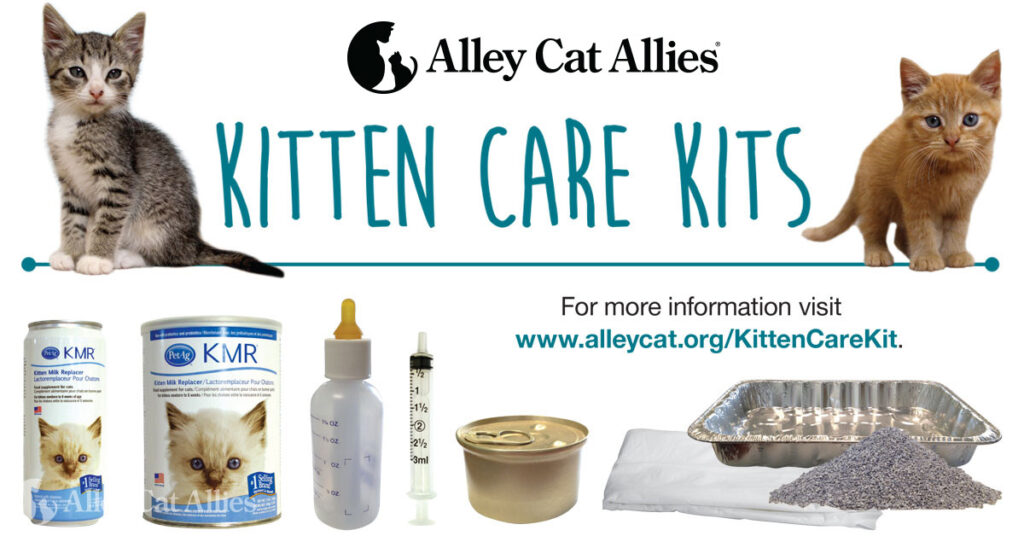
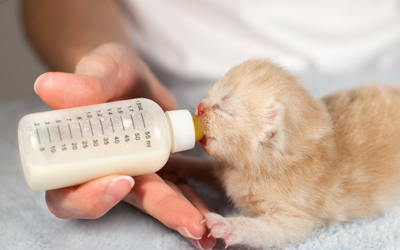
kitten formula
Use only kitten formula, such as kitten milk replacer (KMR), which can be purchased at most pet supply stores or online. It comes in powder form, or milk cans. Follow the instructions. Do not feed them cow or goat milk, this will upset their stomach and give them diarrhea, making them dehydrated and may cause death.
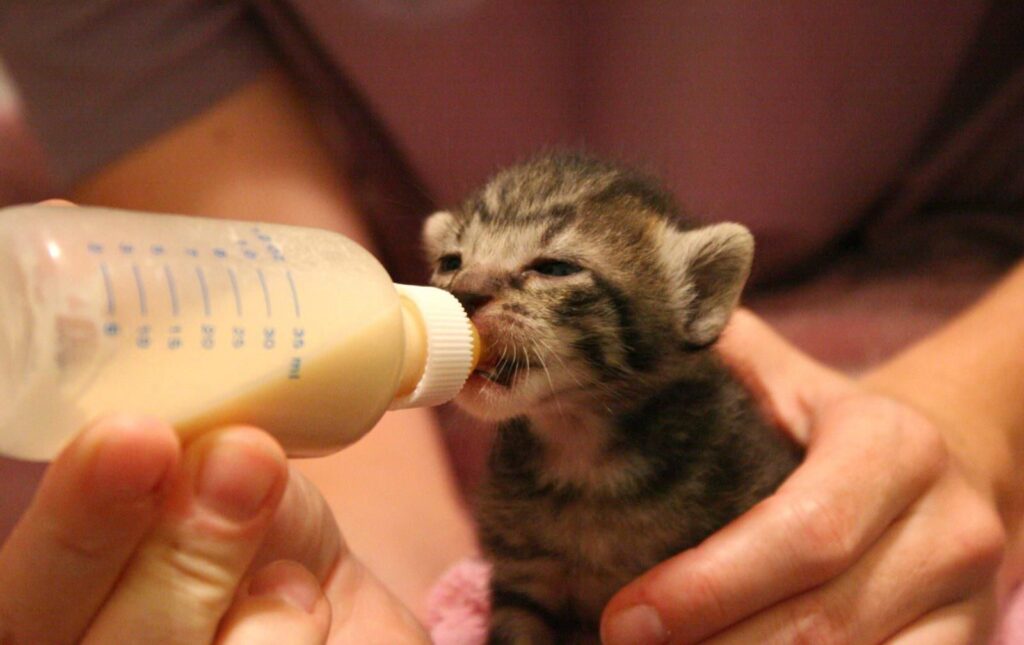
How to Feed Kittens
1. Use elongated nippled kitten bottles; they are easier. Make a hole in the nipple with a sterilized pin or razor; so that the KMR drips out slowly when it’s upside down. Warm the bottle and then test on your wrist before feeding.
2. If the milk isn’t coming out, make the pinhole on the nipple larger; or, if there is too much coming out, change the nipple to one with a smaller hole. Sterilize the bottles and wash your hands before and after each feeding.
3. Hold kittens on their stomachs and tilt the bottle so less air gets in. Do not feed kittens on their backs. They will usually stop eating when they’re full.
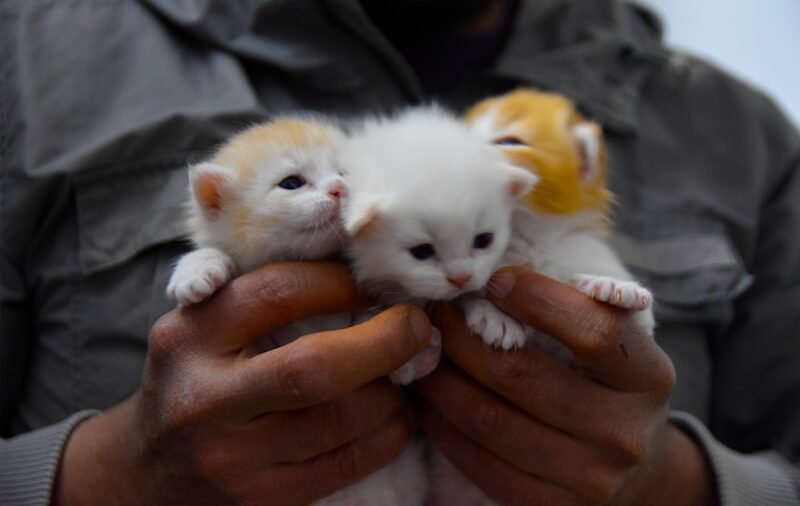
feeding schedule
The frequency that your kitten eats depends on how old the kittens are:
- Up to 1 week old: every 2-3 hours
- 2 weeks old: every 3-4 hours
- 3 weeks old: every 4-6 hours.
- 6 weeks old: three or more feedings of canned food spaced out evenly throughout the day
- 12 weeks old: three feedings of canned food spaced out evenly throughout the day (see chart below). Source: Alley Cat Allies
kitten feeding schedule
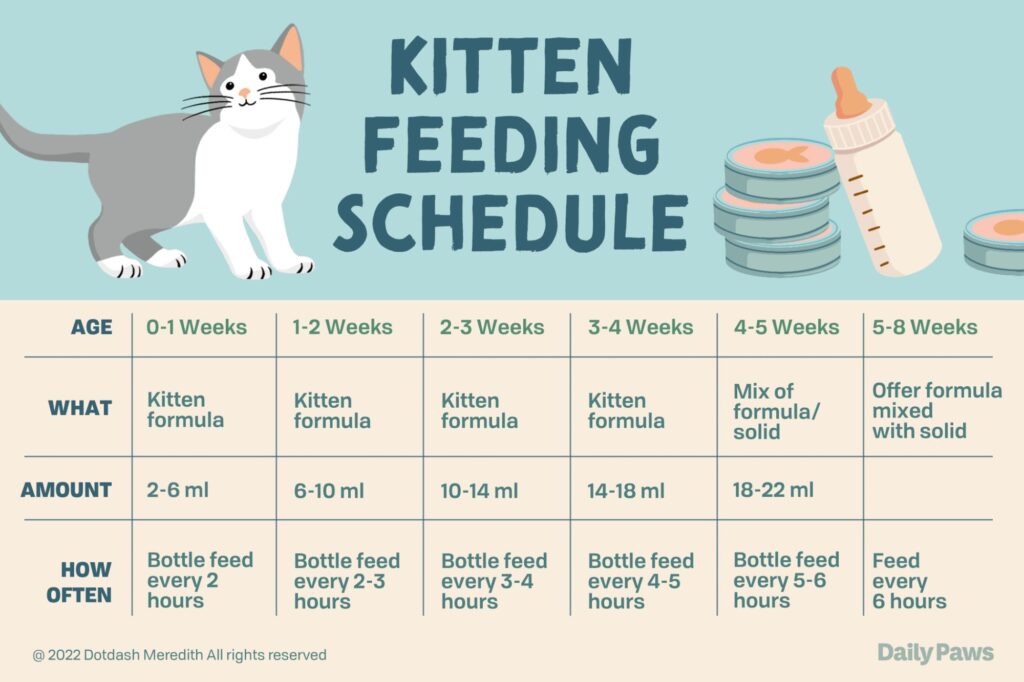
kittens are fed. Now what? burping & elimination
Burping and elimination are the next steps in kitten care immediately after feeding. Kittens can’t eliminate on their own. Mom usually licks their bottom to get them to eliminate, so you have to emulate this process. Source: Alley Cat Allies
How to Burp a Kitten
As long as kittens are eating formula, you have to burp them. Put them on your shoulder or on their stomachs and pat them gently on their backs until you feel them burp. Kitten formula is sticky, so be sure to clean kittens after feeding with a warm, damp washcloth, and dry them as needed.
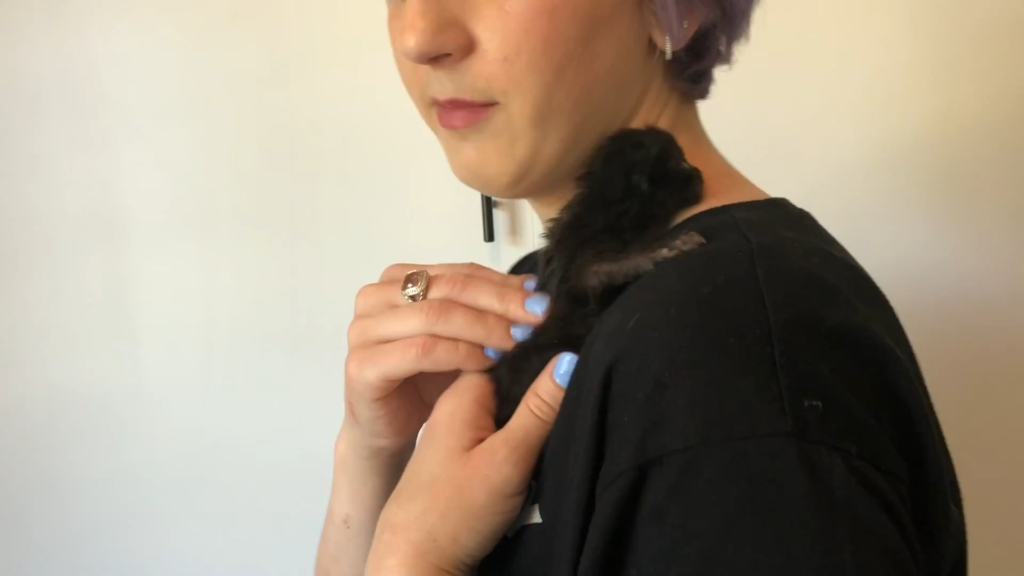
Elimination
Kittens under 4 weeks must be stimulated to poop and pee after each feeding. Use a warm, moist cotton ball, tissue, or washcloth to gently rub the kittens’ anal area to stimulate urination and defecation.
Completely solid feces usually will not form while kittens are drinking formula. If you notice the kittens are having trouble urinating or defecating, consult a veterinarian.
Start litter training at 4 weeks. Kittens may start looking for a place to go as young as 2½ weeks of age. Use a small, shallow litter pan with non-clumping litter. Do not use paper or fabric while this is soft, it can teach bad habits! Show kittens the litter box and put in a used cotton ball so they can use the poop scent, and this should do the trick.
how to bottle feed and eliminate (don't forget to burp!)
Don’t worry if you don’t have a scale at this point. Source: Best Friends Animal Society
What if the Kittens showing signs of being injured or sick?
If a kitten is showing any of these signs, contact your local veterinarian right away. Source: Alley Cat Allies & WebMD
illness or injury
- Thin stomachs, gaunt faces, visible ribs and spine
- Cold ears, bellies, and paws
- Pale gums and tongue
- Lethargy/almost no movement
- Excessively crusted eyes or nose
- Diarrhea or vomiting
- Struggling to breathe
- Limping
- Visible wounds or sores
- Crying out in pain
Upper Respiratory Infection (URI)
Though this is common in kittens, it shouldn’t be ignored. If heavy yellow discharge develops or the kitten has trouble breathing or eating, see a veterinarian immediately. A mild URI can be cleared up by wiping away discharge with a warm, wet cloth and keeping kittens in a warm, damp environment.
Fleas
Fleas on a very small kitten can cause anemia. Pick fleas off with a flea comb. For a bad infestation, you can bathe the kitten in warm water using Dawn. Avoid the eye area use a washcloth around the face and rinse them thoroughly. Dry them completely and keep them warm. Do not use flea shampoo or topical flea treatments on kittens 6 weeks or younger.
Diarrhea
Any drastic change in stool consistency can mean trouble. Parasites can often cause diarrhea, strange looking stools, and dehydration. Kittens can begin a deworming treatment schedule as young as 10 days old; see a veterinarian for this.
what do i do with a cat or 8 weeks or older?
8 week old kittens are weaned from their mother, they don’t rely on her milk and are eating on their own. Take them to a veterinary clinic for spay or neuter! Getting them fixed is ideal for health and to stop overpopulation. Source: Alley Cat Allies
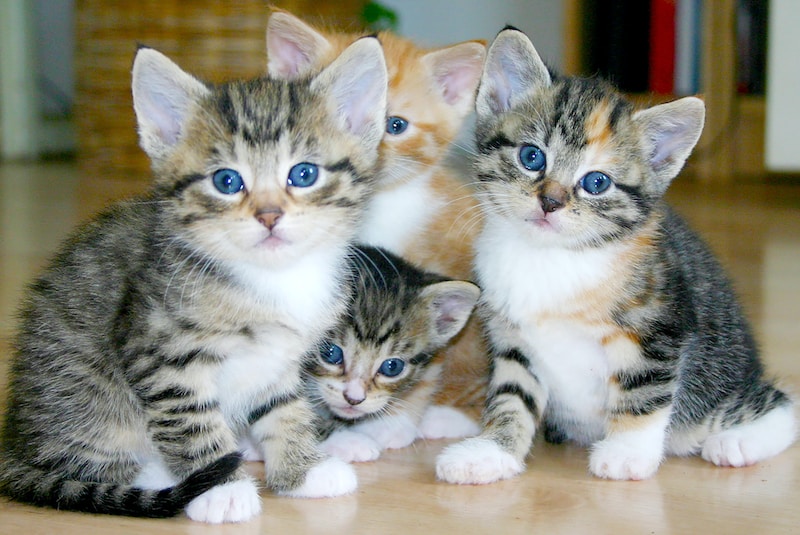
SPAY & NEUTER
It is time to spay and neuter. If the kittens’ mother is with them, spay her at the same time as her kittens so she does not become pregnant again. We have tips for trapping a mother cat and kittens for a Trap-Neuter-Return (TNR) . Visit our local TNR rescues here.
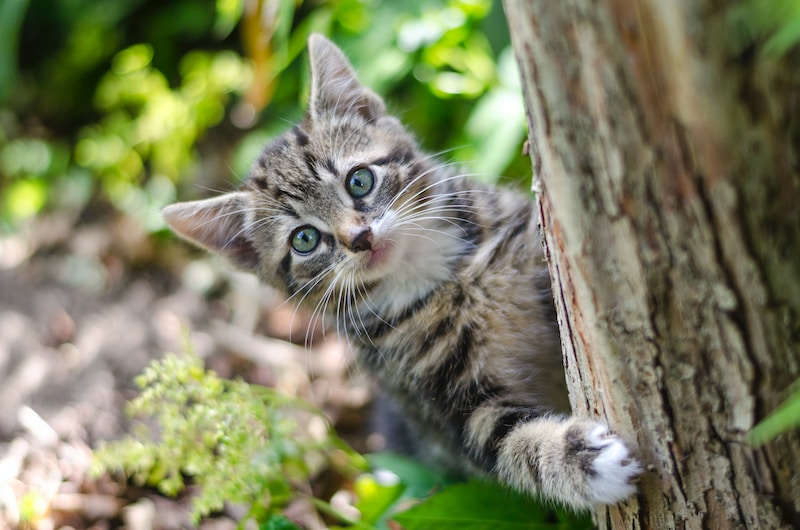
RETURN THE KITTENS OUTDOORS
Returning kittens to their outdoor homes as part of a TNR program is 100 percent okay if you can’t get them a forever home. Be sure they are ear tipped during their spay or neuter appointment. If a mother cat is not socialized–friendly and accustomed to people–return her to her outdoor home as part of TNR as well. Visit our local TNR programs here.

FOSTER/ADOPT
Foster and adopt the kittens. If you have the means, you can foster the kittens for adoption, or adopt them yourself. You can also do the same for a mother cat who is socialized. Visit our local rescues here for more info.
Thank you to our sources The Kitten Lady, Alley Cat Allies, WebMD, Daily Paws, Facebook, Best Friends Animal Society and the Jill’s Next Door Feline Alliance team for the invaluable information to help aid our South Florida kitties and our community!




